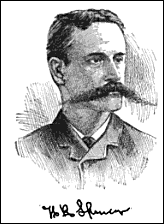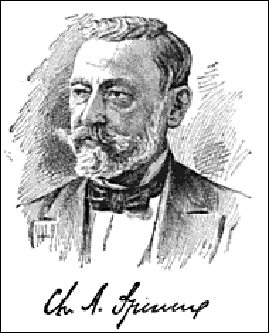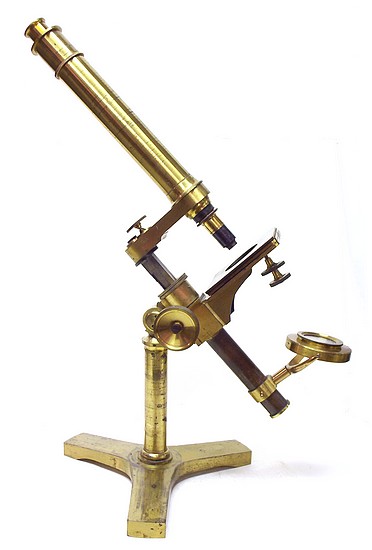
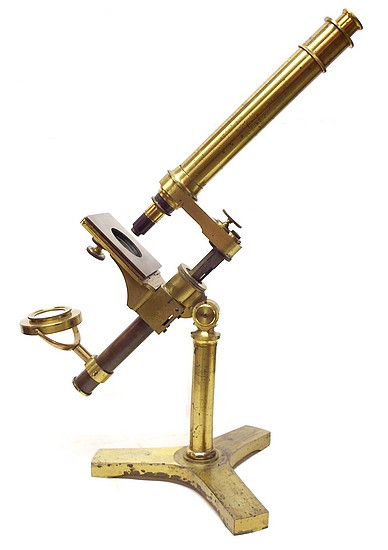
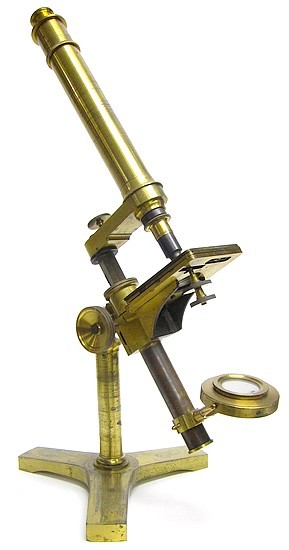
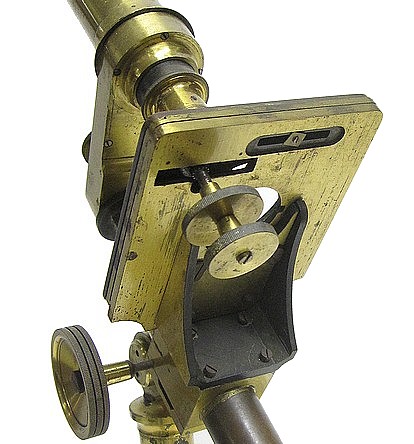
The following is from Carpenter's The Microscope and its Revelations, first American edition, 1855:
A very efficient
microscope, is one known as the "Pritchard form:" this
instrument has been somewhat modified by Mr. Spencer,
and where a less expensive instrument than either of
the others is desired, this one will be found a good
working instrument, and available for all purposes of
anatomical study. The cost of this form, with
object-glasses as high as the 1/8 th, with the usual
accessories is from $125 to $150.
This microscope, while
unsigned, is an example made by Charles A. Spencer in the Andrew
Pritchard style. The mechanical stage is of the Turrell
type with the unusual feature of having the controlling
knobs located under the stage (this type of mechanical stage was also used on
a version of Spencer's Trunnion microscope).
This instrument formerly
was the property of the now defunct Brigham Hall
Hospital at Canandaigua NY (founded by Drs. Robert D.
and George Cook in 1855), an institution established
for the treatment of "Mental and Nervous
Diseases".
The microscope as
pictured in a 1955 newspaper article:
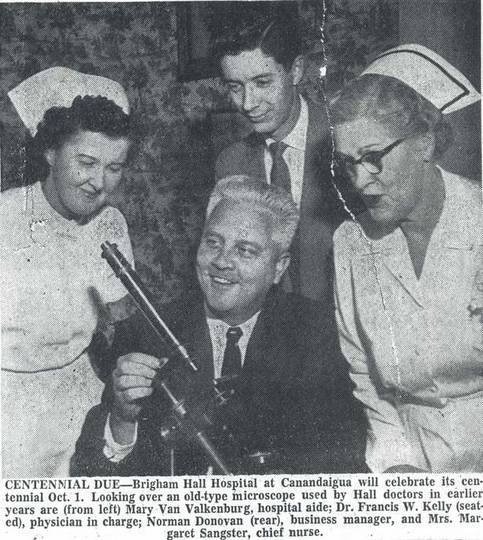
The following was extracted from the History of medicine in New York v. 3, 1919:
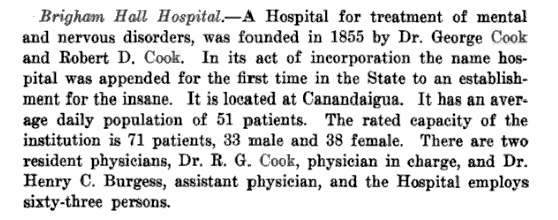
The following biographies were extracted from The National Cyclopedia of American Biography, vol. XIII, 1906.
SPENCER, Charles Achilles, lensmaker, was born at Lenox, Madison co., N. Y., Sept. 13, 1813, son of Gen. Ichabod Smith and Mary (Pierson) Spencer, and a descendant of Thomas Spencer, the first of the family in America. The line is traced through Thomas's son Thomas, through his son Samuel, his son Thomas, his son Eliphalet, and his son Eliphalet, the father of Ichabod Smith Spencer. The last named was an officer in the war of 1812. The son was educated at Cazenovia Academy, Hobart College, and Hamilton College. He displayed his natural aptitude at a very early age, making his own optical glass when only twelve years old. In 1838 he announced himself as a manufacturer of telescopes and microscopes, locating his workshop at Canastota, N. Y., and here, in spite of busmess reversals he continued to devote himself to the perfection of the achromatic telescope and microscope, later becoming the pioneer in developing the possibilities of lensmakmg as applied to the microscope. Ten years later (1848) there issued from this little shop at Canastota lenses that mystified both English and French microscopists, chiefly because of their great resolving power. He had succeeded in making the microscope objectives so effective as to accomplish results in " definition " before unknown, surpassing the efforts of the best European opticians and upsetting their claim that they had obtained the largest angular pencil of light that could be passed through a microscope object glass. He had proved by actual construction that the angle of aperture in these higher power objectives could be greatly increased, and with it their defining and resolving powers. The English makers charged Mr. Spencer with the I knowledge of some mode of working glass as yet unknown to other opticians, and while this was partly true, his chief success was due to his tact in figuring the lenses so as to balance the aberrations, a process so delicate that it would have availed no one not possessed of the same skill to copy curves. From this time forward Mr. Spencer kept steadily in advance of foreign opticians as to angle of aperture; and his microscopical objectives were pronounced the best in the world. In the fall of 1873 a disastrous fire broke out in Canastota, destroying his shop with nearly all his tools and machinery (the accumulation of many years), together with a large amount of finished and unfinished work. Crippled, but not disheartened, he continued his work under difficulties, and in 1875 entered the employ of the Geneva Optical Works, Geneva, N. Y., where he worked for two years. During 1854-56 his business was conducted under the firm name of Spencer & Eaton, his partner being A. K. Eaton, and in 1877 he started the firm of C. A. Spencer & Sons, with his sons Herbert R. and Clarence Leslie Spencer, and Major O. T. May, his son-in-law. This association lasted for three years, when the health of Mr. Spencer, Sr., failed to such an extent that he gave up active work. On Aug. 10, 1881, Charles A. Spencer was elected one of the first honorary members of the American Society of Microscopists. He was married July 10, 1838, to Mary Morris, daughter of Lonson and Hannah Stilwell, of Manlius, N. Y., and had six children. He died at Geneva, N. Y., Sept. 28, 1881.
